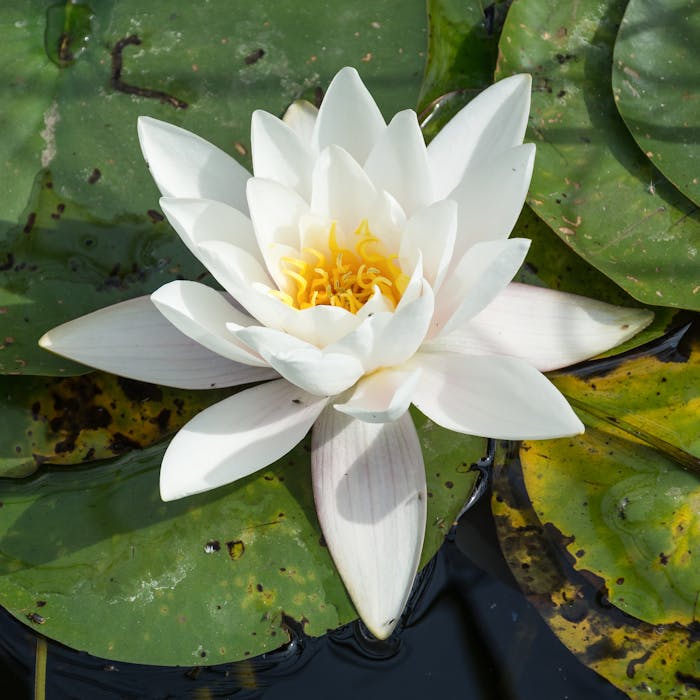
The white water lily - Britain's largest native wildflower
The white water lily is the only native water lily in Britain, and is also our largest wild flower, with blooms that grow up to 20cm in diameter. It has rounded, leathery, floating leaves, making up large, white flowers that are sometimes tinged with pink and are borne on stalks just above the water.
The white water lily (Nymphaea alba) is relatively common around the country, and can be seen in still and slow-moving water, such as ponds, ditches, lakes and canals. Its massive, white flowers float at the water's surface, set off by the large green lily pad leaves, that are up to 30cm across. It enjoys water up to 5m deep; with the leaves and flowers floating at the surface, while the rest of the plant is submerged, growing from the mud at the bottom.
The lily flowers during the summer, from June to August, and likes a sunny spot. It is found throughout the UK, apart from northern Scotland and South West England. Water lilies provide shelter for frogs and nectar for insects and pond life.
The lily contains the active alkaloids nupharine and nymphaeine, and is considered to be a sedative and an aphrodisiac/anaphrodisiac. The root of the plant was used by monks and nuns for hundreds of years as an anaphrodisiac, being crushed and mixed with wine. In the earliest printed medical textbooks, authors maintained this use, though warning against consuming large and frequent doses. Although roots and stalks are used in traditional herbal medicine along with the flower, the petals and other flower parts are the most potent. Alcohol can be used to extract the active alkaloids, and it also boosts the sedative effects.
Further reading
Links to external websites are not maintained by Bite Sized Britain. They are provided to give users access to additional information. Bite Sized Britain is not responsible for the content of these external websites.
